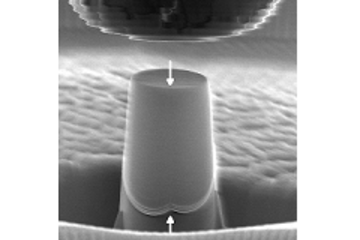All genres
581.
Thesis - PhD
Regenerative Nanocomposite-Coatings tailored for Smart Corrosion Protection. Dissertation, Ruhr-Universität Bochum, Fakultät für Maschinenbau, Bochum, Germany (2017)
582.
Thesis - PhD
Passivity and passivity breakdown on copper: In situ and operando observation of surface oxides. Dissertation, Ruhr-Universität Bochum, Fakultät Maschinenbau, Bochum, Germany (2017)
583.
Thesis - PhD
Performance of catalysts in electrode structure – bridging the gap between fundamental catalyst properties and behavior in real applications. Dissertation, Ruhr-Universität Bochum, Fakultät für Maschinenbau, Bochum, Germany (2017)
584.
Thesis - PhD
Investigation of Redox-Responsive Coatings for Zinc Corrosion Protection. Dissertation, Ruhr-Universität Bochum, Bochum, Germany (2015)
585.
Thesis - PhD
In-situ Untersuchungen zu Benetzungsverhalten und Grenzflächenreaktionen beim Feuerverzinken legierter Stähle. Dissertation, Ruhr-Universität-Bochum, Fakultät für Maschinenbau, Bochum, Germany (2009)
586.
Thesis - PhD
Conductive polymers for corrosion protection: A critical investigation. Dissertation, Ruhr-Universität-Bochum, Fakultät für Chemie, Bochum, Germany (2009)
587.
Thesis - PhD
Release Studies on Mesoporous Microcapsules for New Corrosion Protection Systems. Dissertation, Ruhr-Universität, Fakultät für Maschinenbau, Institut für Werkstoffe, Bochum, Germany (2007)
588.
Thesis - PhD
Anfangszustände der Oxidation von Fe-15%Cr Legierungen. Dissertation, Universität Dortmund, Fachbereich Chemie, Dortmund, Germany (2006)
589.
Thesis - PhD
Untersuchungen zum Schädigungsverhalten von ultra-dünnen Plasma-Polymer-Beschichtungen auf mechanisch belasteten Metallsubstanzen. Dissertation, Ruhr-Universität Bochum, Bochum, Germany (2004)
590.
Thesis - Habilitation
Wasserstoff in Metallen: neue Messverfahren zum Nachweis mit hoher räumlicher Auflösung. Habilitation, Ruhr-Universität Bochum, Bochum, Germany (2016)
591.
Report
Novel Annealing Procedures for Improving Hot Dip Galvanizing of High Strength Steels. (2010)
592.
Report
Self-Healing at Cut-Edge of Coil Coated Galvanized Steel. (2009)
593.
Other
Organizer of the workshop “Status and Future Challenges in Characterisation of Interfaces for Electrochemical Applications - Part 1” at the MPIE. (2016)
594.
Other
Schichtsystem zum Korrosionsschutz, (2013)
595.
Other
Process for coating metallic surfaces with an anti-corrosive coating. (accepted)
596.
Other
Symposium D2 - Coatings for Corrosion Protection. (2011)
597.
Other
Process for coating fine particles with conductive polymers, (2008)
598.
Other
Symposium X1 - Electron Transfer Reactions at Organic/Metal Interfaces: From Molecular Monolayer Modified Electrodes to Buried Polymer Metal Interfaces. (2006)
599.
Editorial
Coatings for Corrosion Protection. ECS Transactions 41 (15) (2012)
600.
Patent
Nanocapsules for early stage corrosion detection. (2018)











